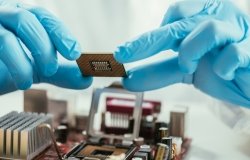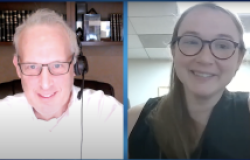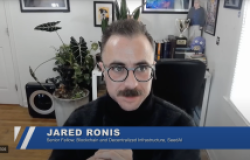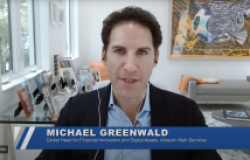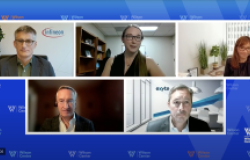New NIOSH Approaches to Safe Nanotechnology & Strategic Plan for Nanotechnology Research
According to Andrew Maynard, chief science advisor for the Wilson Center's Project on Emerging Nanotechnologies, a project created in partnership with The Pew Charitable Trusts, the release of Approaches to Safe Nanotechnology: An Information Exchange with NIOSH and Strategic Plan for NIOSH Nanotechnology Research: Filling the Knowledge Gaps is a small but important step forward by the U.S. government to address the possible health implications of nanotechnology.
The release of Approaches to Safe Nanotechnology: An Information Exchange with NIOSH and Strategic Plan for NIOSH Nanotechnology Research: Filling the Knowledge Gaps is a small but important step forward by the U.S. government to address the possible health implications of nanotechnology.
Together, these publications from the Centers for Disease Control's National Institute for Occupational Safety and Health (NIOSH) represent the most comprehensive assessment to date to come out of the federal government about nanotechnology's possible occupational health impacts.
But this is just one "nano" step in a long journey. NIOSH's current research budget for nanotechnology is approximately one third of one percent of the total U.S. government annual investment of $1 billion in nanotechnology research and development. According to both corporate and environmental groups alike, the federal government is spending only a small fraction of what's needed to study nanotechnology's environmental, safety and health implications.
A key question is whether the resources exist to act on NIOSH's proposed strategy. With the National Science Foundation predicting that by 2015 nanotechnology will have a $1 trillion impact on the global economy and will employ 2 million workers—1 million of which may be in the United States—it is critical to develop the research data necessary to maintain safe American workplaces. NIOSH's current nanotechnology budget is not sufficient to support and sustain the necessary research. If progress is to be made, there needs to be significant additional funding and better research coordination within the U.S. government—as well as internationally.
With nanotechnology being heralded by some as the next industrial revolution, nanotechnologies promise great societal and economic benefits. However, the scale and uniqueness of these technologies—a human hair is roughly 100,000 nanometers (nm) wide, and nanomaterials are generally engineered at a scale of 1 to 100 nm—may lead to new health, safety and environmental risks. Understanding and addressing these risks, especially in the workplace, will be integral to the long-term success of nanotechnologies.
Andrew Maynard is chief science advisor for The Project on Emerging Nanotechnologies at the Woodrow Wilson International Center for Scholars. The Project was created in partnership with The Pew Charitable Trusts. Maynard is an internationally recognized leader in the research fields of aerosol characterization and the implications of nanotechnology to occupational health. Prior to joining the Project, he was instrumental in establishing NIOSH's nanotechnology research program.
Related Links
Related Programs

Science and Technology Innovation Program
The Science and Technology Innovation Program (STIP) serves as the bridge between technologists, policymakers, industry, and global stakeholders. Read more

Maternal Health Initiative
Life and health are the most basic human rights, yet disparities between and within countries continue to grow. No single solution or institution can address the variety of health concerns the world faces. By leveraging, building on, and coordinating the Wilson Center’s strong regional and cross-cutting programming, the Maternal Health Initiative (MHI) promotes dialogue and understanding among practitioners, scholars, community leaders, and policymakers. Read more


